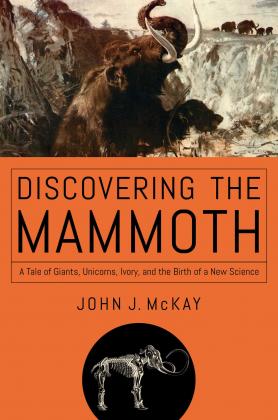
| Format | Hardcover |
| Publication Date | 08/08/17 |
| ISBN | 9781681774244 |
| Trim Size / Pages | 6 x 9 in / 264 |
The fascinating saga of solving the mystery of this ancient animal who once roamed the north country—and has captivated our collective imagination ever since.
Long after the last mammoth died and was no longer part of our diet, this awe inspiring creature still played a role in human life. Cultures around the world interpreted the remains of mammoths through their own world view and mythology.
When the ancient Greeks saw deposits of giant fossils, they knew they had discovered where the gods had vanquished the titans. When the Chinese discovered buried ivory, they knew they had found dragons’ teeth. But as the Age of Reason dawned, monsters and giants gave way to the scientific method. Yet the mystery of these mighty bones remained. How did Enlightenment thinkers overcame centuries of myth and misunderstanding to reconstruct an unknown animal?
The journey to unravel that puzzle begins in the 1690s with the arrival of new type of ivory from Russia. It ends during the Napoleonic Wars with the first recovery of a frozen mammoth. The path to figuring out the mammoth was traveled by a colorful cast of characters, including Peter the Great, Ben Franklin, the inventor of hot chocolate, even one pirate, and it culminates with the creation of the science of paleontology.
John J. McKay has a Master’s in History from the University of Washington. A technical writer by trade, he is the "Mammoth Guy" by vocation, and his remarkable archival research, lively wit and passion for extinct proboscideans is well known to the scientific community. He lives in Anchorage, Alaska, where people appreciate a good mammoth. Visit him at mammothtales.blogspot.com.
Buy it now in print: Amazon Barnes & Noble IndieBound
Buy it now in ebook: Amazon Barnes & Noble Apple Kobo
"McKay examines our long fascination with the mysterious, extinct pachyderms that once roamed the earth." New York Times Book Review (Editors’ Choice)
"McKay argues persuasively for the mammoth as ‘a catalyst that drove a revolution in thinking." The New Yorker
"Discovering the Mammoth is one of those books that make you wonder about the author as much as about his topic. Mr. McKay makes the case that, beginning about 1600, mammoths and their mastodon cousins became ‘a focusing problem for a scientific revolution.’ They were the starting point for sweeping changes in geology and comparative anatomy and in the ways we think about life on Earth. Mr. McKay fills in the European background in admirable detail. Mammoths, elephants and their kin, John McKay suggests, helped make us who we are." The Wall Street Journal
"McKay masterfully weaves an intricate story of the events, politics, people, and scientific development associated with the ‘rediscovery’ of mammoths." Booklist
"A well-organized history of science. [McKay’s] story is not about ancient creatures, but about how humans approach the world’s mysteries." Publishers Weekly
"As John McKay vividly relates, the scientific saga [of the mammoth] began in the seventeenth century, when the evocative remains became pivotal to the evolution of vertebrate palaeontology." Nature